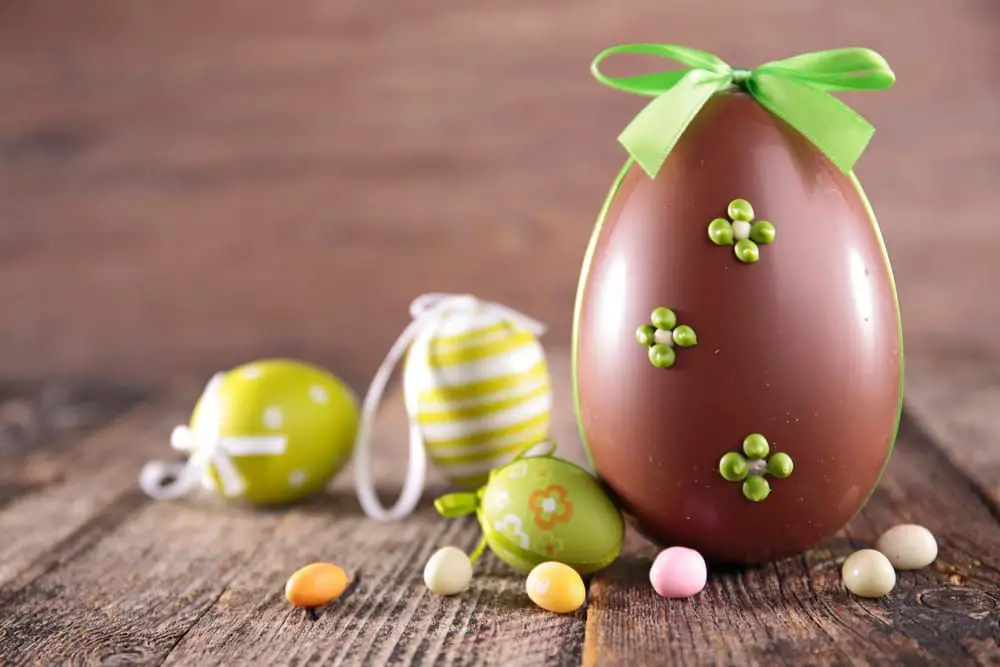Easter it is the day when more chocolate is consumed all year round, more than Valentine's Day and Christmas. Surely the sweet day is awaited by everyone, young and old, who for religious reasons and who, perhaps more greedy, to have the excuse of enjoying the tons and the – almost – infinite varieties of chocolate on the market today.
However, as always, the tradition has much older origins than we think. How did the idea of "exchanging" chocolate eggs come about? Has it always been like this? Today we are here to remove this doubt.
The Easter egg
The egg has a great symbolism since ancient times: some pagan beliefs considered the sky and the planet two hemispheres that went to create a single egg, while the ancient Egyptians considered the egg as the fulcrum of the four elements of the universe, namely water, air, earth and fire. The tradition of egg exchange is not a purely Christian thing, this custom is documented among the ancient Persians (who exchanged simple chicken eggs at the advent of the spring), and also between Egyptians, Greeks and Chinese. In the Christians, however, this tradition began in Mesopotamia; here the inhabitants colored the eggs red, in memory of the blood of Christ shed during his crucifixion. The custom of the egg was also resumed in the Middle Ages, where it was given to servants, shortly thereafter it was definitively placed as a Christian symbol. Also in the Middle Ages, a new tradition also developed: the creation of artificial eggs made or coated in precious materials such as silver and gold, not for slaves, but destined for the nobles of the period.
There egg tradition with surprise is due to the goldsmith Peter Carl Fabergé. The man, in 1883, received from Tsar Alexander III the task of preparing a special gift for Tsarina Maria; the goldsmith created for the occasion the famous "Fabergé egg", a white-glazed platinum egg containing an additional gold egg which in turn contained two other gifts: a reproduction of the imperial crown and a golden chick.
The success of this initiative contributed to the spread of surprise inside the egg. However, this could go back to the master chocolatiers of Piedmont, who used to insert a small gift inside the chocolate eggs, all this already in the 1700s.
The Easter dove
A dessert that we often see on our tables (or in supermarkets) at this time of year is the Easter dove. This dessert has all Italian origins and was created around 1930 by Motta. The idea was to exploit the same machines and the same dough as the panettone.
There are more sensational stories about the story of the Easter dove: even its origin is placed, according to some legends, in the mid-sixth century when the Lombard king Alboino came offered as a sign of peace a sweet pan in the shape of a dove.
Another discreetly known legend places the origin of the dish around 610 AD, during a lunch of San Colombano together with the Lombard rulers. According to legend, many dishes were served to man which were promptly refused because they were served in a period of penance such as Lent.
This refused offended Queen Theodolinda, so the saint decided to bless the dishes, which turned into doves of bread. Free to believe in the version you prefer.
The chocolate rabbit

Although it is not so widespread in our territory, the Easter chocolate rabbit is slowly gaining ground. The tradition of the Easter rabbit (which was actually originally a hare), in fact, it is more related to holidays in Northern Europe. In the pre-Christian era, northern European populations found the meaning of fertility and rebirth in the animal.
The unification with Easter seems to have occurred in Germany between the Middle Ages and the Renaissance. According to tradition, in several German locations, children use the night before Easter prepare a bed for the bunny, complete with sweets to feed the animal. The good children received delicious colored eggs as gifts … otherwise nothing.
This custom seems to be around 1700 been transferred to the United States, and then spread quickly in most of the territory. Over the years, the animal has become another symbol of Easter, being marketed in many versions that have finally come to us too. Welcome when it comes to such exquisite things.















